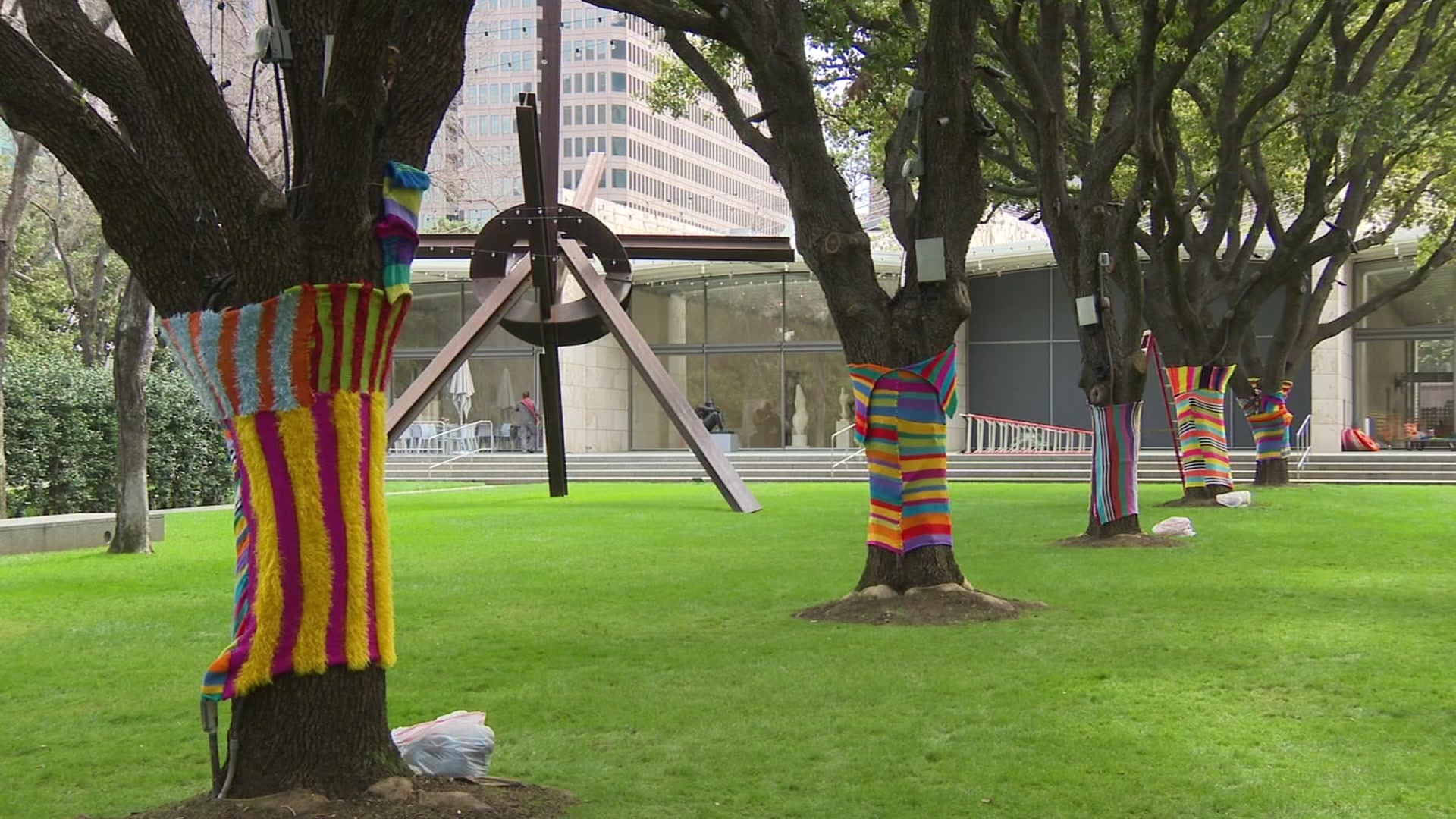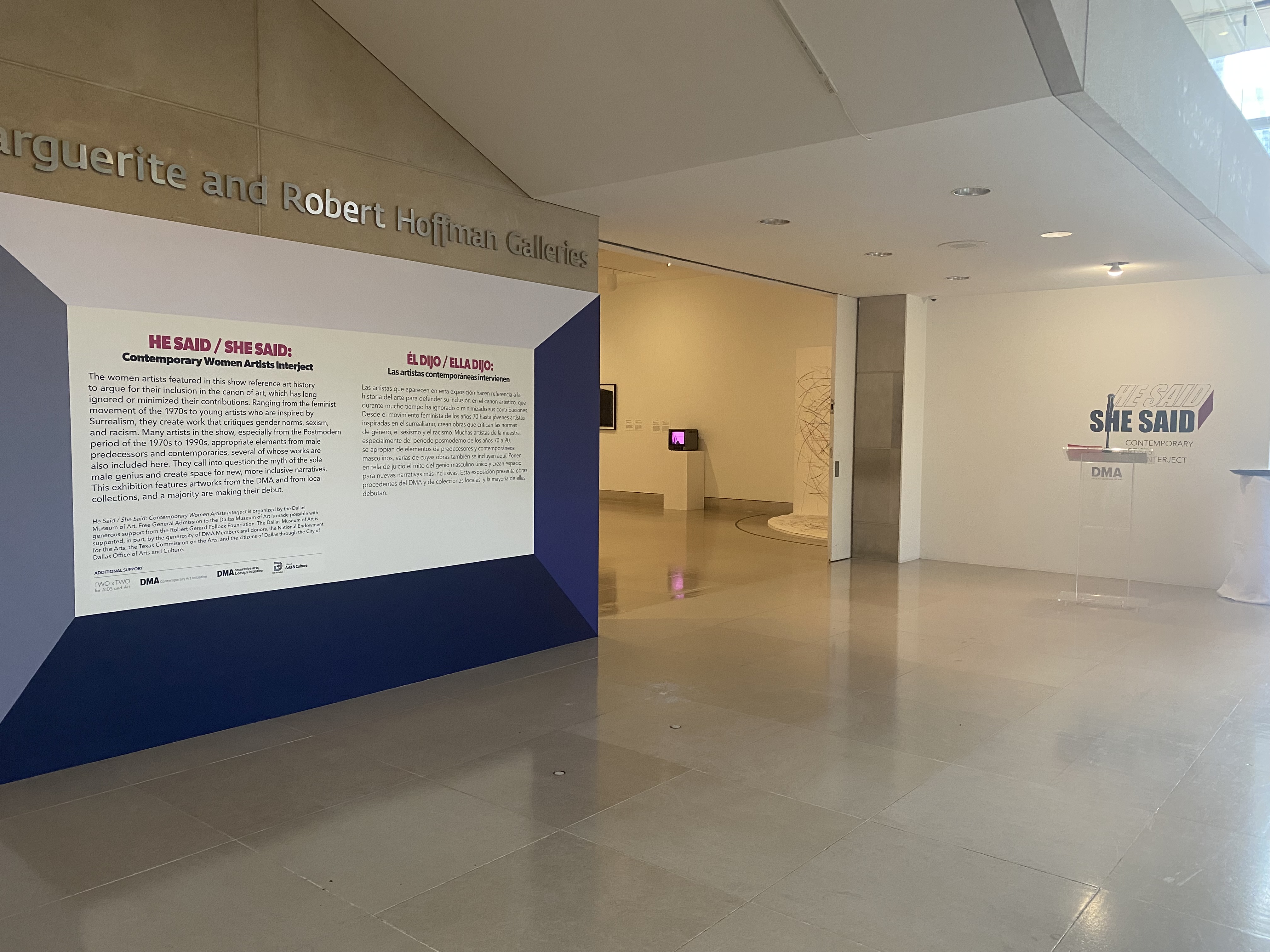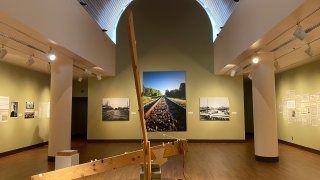
A highway now runs through where a vibrant community existed. Two exhibitions, Central Track: Crossroads of Deep Ellum and Seeing a World Blind Lemon Never Saw, at the African American Museum, Dallas try to bring to life that community that was lost to concrete. Both exhibitions are on view at the Fair Park museum through May 30.
Alan Govenar and Phillip Collins co-curated Central Track, chronicling the development and demise of North Central Avenue, in the area known as Central Track or Stringtown, which connects Deep Ellum to what was known as Freedman Town after the Civil War. It is now known as Uptown. The area was destroyed in the 1940s for the construction of North Central Expressway and the I-635 overpass.
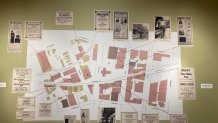
The co-curators created a map to show where various businesses once stood, based on advertisements in newspapers.
Get DFW local news, weather forecasts and entertainment stories to your inbox. Sign up for NBC DFW newsletters.
“The lifeblood of Deep Ellum was in part this neighborhood, this community that grew up along Central Track, Central Avenue, North Central Avenue,” Govenar said.
The exhibition focuses on life during the 1920s and 1930s when the area was filled with Black-owned businesses like movie theaters, cafes, drug stores, music shops, and the landmark building 2551 Elm Street. Designed by William Sidney Pittman, the first African American architect to practice in Texas, the building housed the offices of many Black professionals, including lawyers, doctors and dentists.
As Govenar and Collins worked on the exhibition, they faced a challenge.
“It was very difficult, when Phillip and I began working on this, to find photographic materials. It was astounding in a way we couldn’t find photographs and I’ve been writing about Deep Ellum for decades,” Govenar said.
Instead, the co-curators relied on articles from white and Black newspapers, including The Dallas Morning News, Dallas Express and Indianapolis Freeman, to juxtapose the reality of life in this diverse community with the racist mindset of era.
“It’s the very racist attitudes of the 1920s and 1930s that you see in a lot of these newspaper clippings. It was a time in Dallas when Dallas was controlled by the Klan. It is amazing that this world of Deep Ellum and Central Track came to be. This was an area where people of different cultural backgrounds: Jews fleeing oppression and persecution in Eastern Europe, Blacks fleeing oppression and persecution of East Texas and the East Texas cotton fields, Greeks, Italians, Czechs. It was this cultural mix that came together if not by choice, but by necessity. People had to come together to survive,” Govenar said.
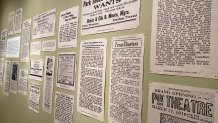
The advertisements reveal the impressive business prowess of Ella B. Moore. Moore managed the Park Theater, presenting vaudeville, minstrel, and touring blues and jazz shows. She also hosted late-night shows for white people interested in Black music.
“She was a community person,” Govenar said.
Herb Jeffries, a jazz vocalist from Chicago loved Westerns but realized all of the cowboys were white. He worked with Jed Buell, a white producer, to create Westerns starring Black cowboys. Alfred N. Sack of Dallas-based Sack Amusements distributed four Westerns, including Harlem on the Prairie, The Bronze Buckaroo, Harlem Rides the Range, and Two-Gun Man from Harlem.
“These movies became immensely successful,” Govenar said.
The Scene
Some of the articles reveal surprisingly skewed priorities. A 1934 article from The Dallas Morning News depicts the celebration of Juneteenth as a burden.
“It’s basically about how wealthier people in Dallas, because of Juneteenth and the fact that their maids were not able to work for them, had to pull together to provide for themselves. So, this is about what are people to do in maid-less Dallas while African Americans are celebrating Juneteenth,” Govenar said.
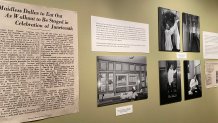
A sculpture by Johannes Boekhoudt, The Dallas Piece, is about the gentrification of the area and displacement of the community.
“It addresses the fall of the Central Track community, and it is represented metaphorically in a cross-like situation,” Collins said.
Collins curates Seeing A World Blind Lemon Never Saw, an exhibition of Alan Govenar’s 34 large images depicting the places important to blues singer Blind Lemon Jefferson.
“These photos represent that environment in which Blind Lemon moved from into Dallas. They are large-scale photographs, and they really represent the landscape in which Blind Lemon lived,” Collins said.
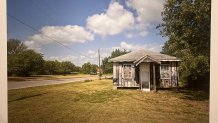
The monumentally-sized photographs are printed on German archival paper. Collins emphasizes the light makes these photographs distinctive.
“They were taken early in the morning and that has a monumental and quietness and that distinguishes his landscapes from those that are traditional photographs,” Collins said. “These landscapes represent the beauty of East Texas and the lives of African Americans.”
Jefferson grew up in East Texas and many of the photographs show places of his youth, such as the church where he first sang.
“These photographs also represent where Blind Lemon was active,” Collins said.
A photograph of the cemetery in Wortham, Texas, where Jefferson is buried and now named after him is included in the exhibition.
“Blind Lemon was so popular as a musician,” Collins said. “It became a tourist attraction.”
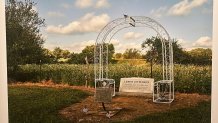
Several photographs are of places Jefferson referred to in his music. Lyrics from his music are printed next to the photographs to explain the musical reference.
“They characterize what Blind Lemon was experiencing,” Collins said.
The exhibition includes photographs of Jefferson’s Dallas life, such as the home he provided for his parents.
“I also wanted to find the places in Dallas where Blind Lemon lived,” Govenar said. “He was a family person, a church person.”
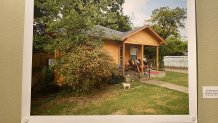
Jefferson lived on South Preston Street, a street that no longer exists. Instead, Govenar’s photograph is of an area under a freeway, a barren concrete void replacing the home of a music legend and the community that embraced him.
Learn more: African American Museum

